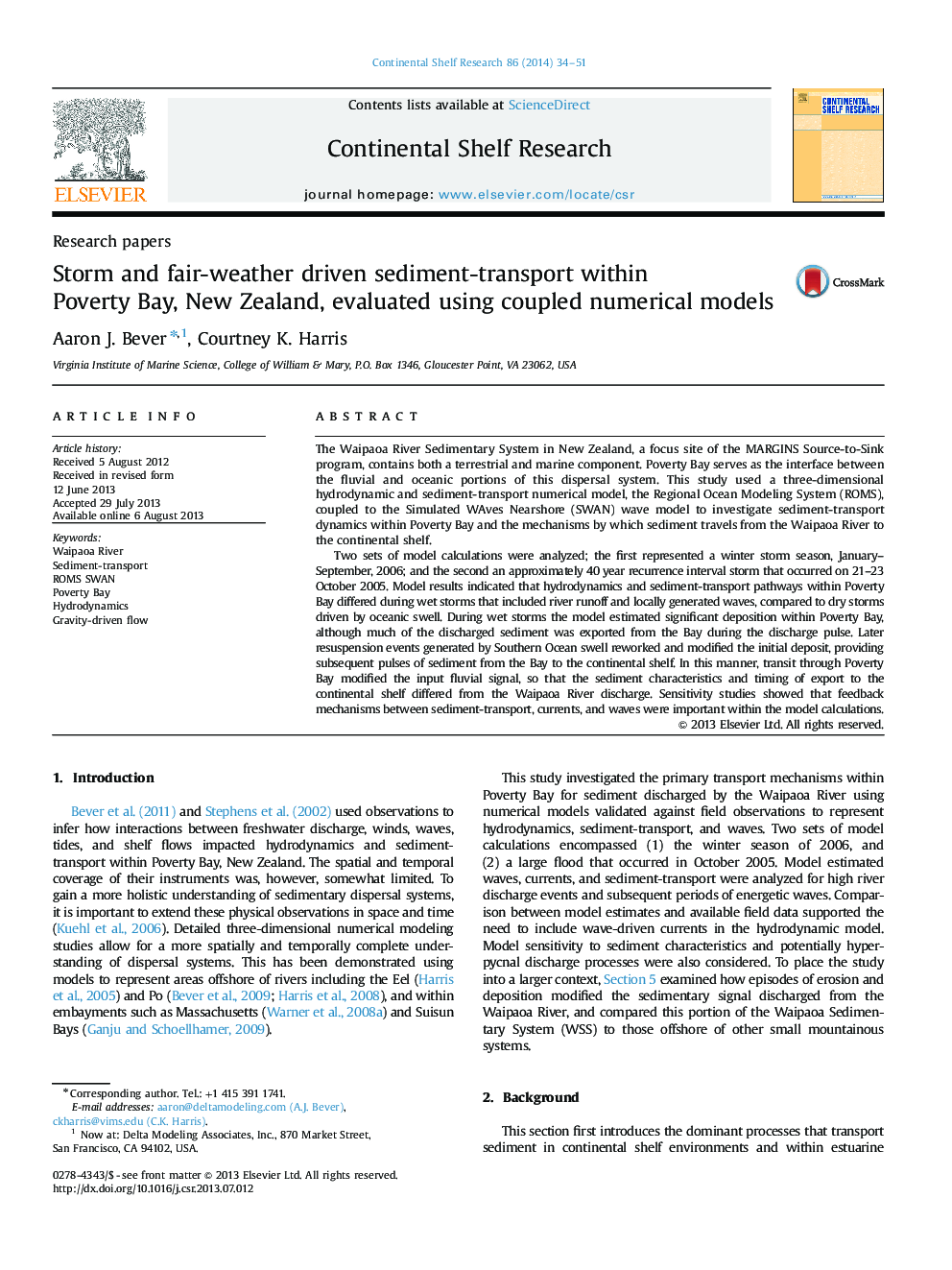| کد مقاله | کد نشریه | سال انتشار | مقاله انگلیسی | نسخه تمام متن |
|---|---|---|---|---|
| 4531846 | 1626126 | 2014 | 18 صفحه PDF | دانلود رایگان |
• We modeled hydrodynamics, waves, and sediment transport in Poverty Bay.
• Centimeters of deposition occurred in the Bay from less than yearly discharge pulses.
• Swell waves removed this sediment from the Bay, creating multiple export pulses.
• Each export pulse supplied sediment with a different sedimentary signal to the shelf.
• Results show gravity driven transport is an important sediment transport component.
The Waipaoa River Sedimentary System in New Zealand, a focus site of the MARGINS Source-to-Sink program, contains both a terrestrial and marine component. Poverty Bay serves as the interface between the fluvial and oceanic portions of this dispersal system. This study used a three-dimensional hydrodynamic and sediment-transport numerical model, the Regional Ocean Modeling System (ROMS), coupled to the Simulated WAves Nearshore (SWAN) wave model to investigate sediment-transport dynamics within Poverty Bay and the mechanisms by which sediment travels from the Waipaoa River to the continental shelf.Two sets of model calculations were analyzed; the first represented a winter storm season, January–September, 2006; and the second an approximately 40 year recurrence interval storm that occurred on 21–23 October 2005. Model results indicated that hydrodynamics and sediment-transport pathways within Poverty Bay differed during wet storms that included river runoff and locally generated waves, compared to dry storms driven by oceanic swell. During wet storms the model estimated significant deposition within Poverty Bay, although much of the discharged sediment was exported from the Bay during the discharge pulse. Later resuspension events generated by Southern Ocean swell reworked and modified the initial deposit, providing subsequent pulses of sediment from the Bay to the continental shelf. In this manner, transit through Poverty Bay modified the input fluvial signal, so that the sediment characteristics and timing of export to the continental shelf differed from the Waipaoa River discharge. Sensitivity studies showed that feedback mechanisms between sediment-transport, currents, and waves were important within the model calculations.
Journal: Continental Shelf Research - Volume 86, 1 September 2014, Pages 34–51
